Contents
When strolling through the fantastic valleys, there may still be a “non-owned” cherry tree that gives the walker and the birds their small but tasteful fruit without chemical insecticides or pesticides.
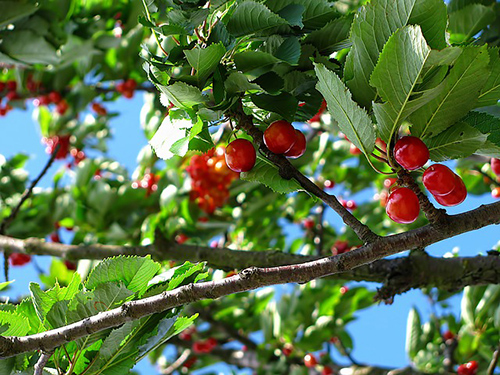
Cherry Tree Scientific Facts
- Other names: Wild Cherry Tree, mazzard, gean.
- Scientific name: Prunus avium L.
- French: Cerisier
- Spanish: Cerezo.
- Environment: Common in warm climate regions of both hemispheres.
- Description: Beautiful tree of the Rosaceae family, with brown bark which is smooth when young and rough when old. It has oval-shaped, toothed leaves, white flowers, and fruits whose color varies from light red to dark purple.
- Parts of the plant used medicinally: The fruits and the stalks (peduncles).
Healing Properties and Uses
Wild cherries and cultivated ones contain a balanced combination of active components, making this fruit an excellent medicine or food.
- Sugars. The sugar they contain is quickly metabolized (even by people with diabetes) as levulose or fructose. The proportion varies from 3 percent to fifteen percent.
- Vitamins. Carotene (provitamin A) in measurable amounts and small accounts of vitamins B and C.
- Minerals. Iron, calcium, phosphorus, sulfur, sodium, and mainly potassium, and a wide range of trace elements (zinc, copper, manganese, cobalt, etc.) give cherries remineralizer and invigorator properties for the body.
- Natural acids. Malic, succinic, and citric. The acid flavor of cherries depends on the percentage of these acids, which act as stimulants on digestive glands and blood depurative.
- Soluble bran. Small amounts of pectin give cherries mild laxative properties.
- Flavonoids, which make them mildly diuretic.
- Salicylic acid, in small proportions (some 2 mg per kg of cherries), owes its mild anti-inflammatory and antiarthritic properties.
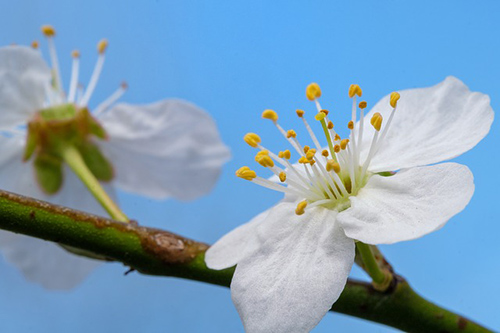
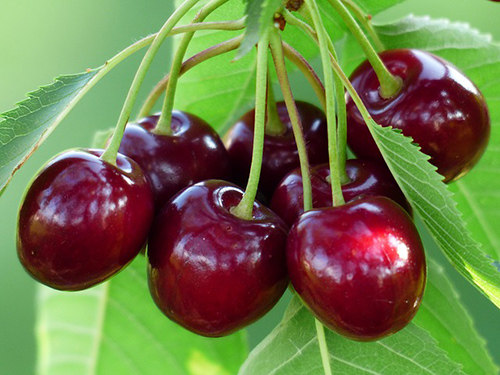
The peduncles of the fruits (cherry stalks) contain mineral salts (mainly potassium salts) and flavonoids, components to which they owe their mild, sure diuretic properties, which lack any side effects. They are one of the most known vegetal diuretic substances.
A cherry treatment (based on fruit and stalk herbal teas) is recommended for healthy and ill people. Due to its depurative properties, it is one of the best ways to cleanse the body from the impurities inside us during the winter and become an invigorator for the summertime. People who will best benefit from this medicinal fruit are the following:
- Cherries help obese people lose weight without the risk of malnutrition or mineral imbalance. Moreover, cherries can decrease the sensation of hunger.
- Those suffering from gout and arthritis will experience a decrease in their uric acid level in the blood, which will alleviate their joint aches.
- People suffering from inflammation of the urinary pathways (pyelonephritis or cystitis) caused by chronic infection or lithiasis (urine calculi).
- Those suffering from chronic constipation caused by intestinal atony since cherries have a mild laxative and stimulating effect on the whole digestive system.
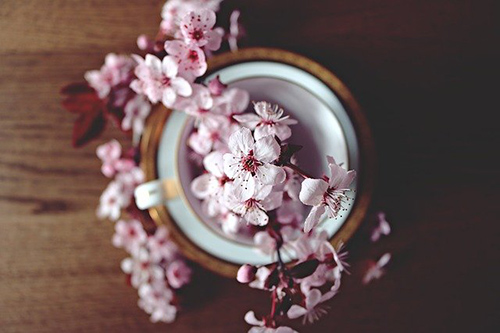
How to use The Cherry Tree
- Cherry treatment. This involves having half a kilogram of ripe fruits four or five times a day as your only food for one or two days. If the cherries are wild, we recommend you take a lesser amount since wild cherries have a higher proportion of active components. People suffering from gastric weakness or slow digestion should boil cherries before eating them. We also recommend drinking herbal teas made with cherry stalks between cherry meals.
- Decoction of cherry stalks, made by boiling 50 grams (dry or fresh) for five minutes. Drink several cups daily, either solely or combined with the cherry treatment.
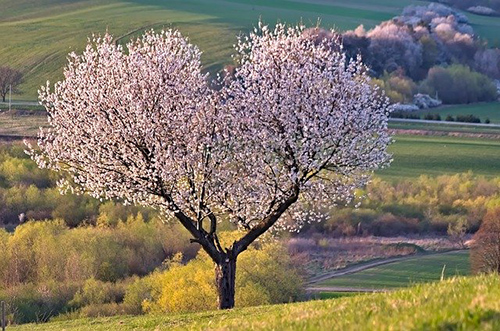
Cherry Trees
All the many species and varieties of the cherry tree, or farmed cherry trees, come from the wild cherry tree (Prunus avium L.), native to Asia Minor. Farmed cherries are usually less sour than wild ones, thus fulfilling the palate of people accustomed to mildly intense, sweet flavors of a Western diet. However, farmed cherries contain fewer medicinal active components than wild ones.
Nevertheless, both varieties can be appropriately regarded as authentic medicinal food. The Morello cherry tree renders a highly desirable fruit to be used in the art of confectionery. In Great Britain and North America, a hybrid species of Prunus avium and Prunus cerasus is cultivated, known as Duke cherry (prunus gondouinii).
DISCLAIMER: All content on this website is presented solely for educational and informational objectives. Do not rely on the information provided as a replacement for advice, diagnosis, or treatment from a qualified medical expert. If you are pregnant, nursing, or have any preexisting medical concerns, talk to your doctor before using any herbal or natural medicines.
REFERENCES
- George D. Pamplona-Roger, M.D. “Encyclopedia of Medicinal Plants.” George D. Pamplona-Roger, M.D. Encyclopedia of Medicinal Plants. Ed. Francesc X. Gelabert. vols. 2 San Fernando de Henares: Editorial Safeliz, 2000. 586, 587. Print.
- Journal of Ethnopharmacology: https://www.journals.elsevier.com/journal-of-ethnopharmacology
- Journal of Agricultural and Food Chemistry: https://pubs.acs.org/journal/jafcau
